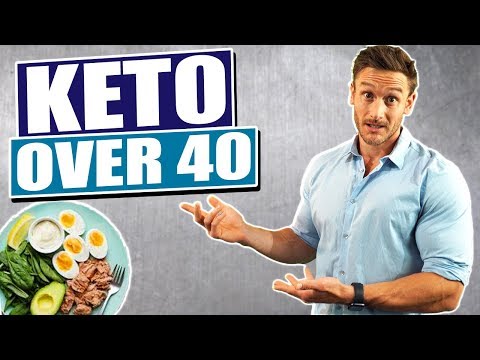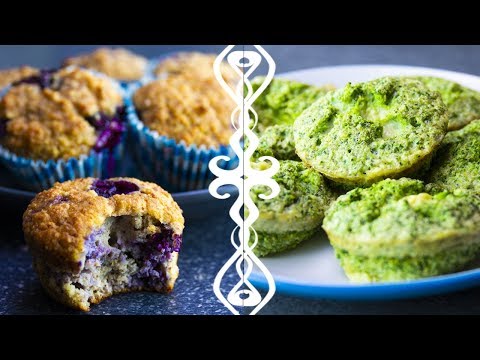
Click Here to Subscribe:
Get My Hormone Optimization Kit from Thrive Market:
My Website:
Keto Over 40: How to Diet Differently – Thomas DeLauer
Benefits
Testosterone/Cholesterol
The study, published in the Journal of the International Society of Sports Nutrition, looked at very low carbohydrate ketogenic diets (VLCKD) relative to a traditional high carbohydrate diet in 26 men
26 men volunteered to participate in the study and were divided into two groups
– VLCKD (5 % CHO, 75 % Fat, 20 % Pro)
– Traditional western diet (55 % CHO, 25 % fat, 20 % pro) – study lasted 11 weeks
All subjects participated in a periodized resistance-training program three times per week – blood samples were taken at week 0 and 11 of the study and analyzed for safety
Total cholesterol increased slightly in the VLCKD group, while it decreased in the traditional western group
However, this rise was driven by an increase in HDL in the VLCKD group (6.69 mg/dl) compared to the western (-1.6 mg/dl) with no changes in LDL
Total testosterone increased significantly in the VLCKD diet (118 ng/dl) as compared to the western (-36 ng/dl) while insulin increased significantly in the western group (3.7 uIu/ml) compared to the VLCKD (.1 uIu/ml)
Concluded that a VLCKD is safe and increases testosterone levels while also increasing insulin sensitivity
Even though the total cholesterol increased in the VLCKD group, their HDL (healthy cholesterol) drove this response
Estrogen
Study – Nutrition & Metabolism
11 overweight women with a clinical diagnosis of PCOS were recruited for the study – they were instructed to limit their carb intake to 20 grams or less per day for 6 months
In the 5 women who completed the study, there were significant reductions from baseline to 24 weeks in body weight (-12%), percent free testosterone (-22%), LH/FSH ratio (-36%), and fasting insulin (-54%)
*2 women actually became pregnant during the study despite previous infertility problems*
To sum, the women lost an average of 12% of their body weight, dropped their fasting insulin levels by 54% and their LH:FSH ratio improved, which made it likelier for normal ovulation to occur
Concluded that the hyperinsulinemia of PCOS increases androgen secretion from the ovary as well as to decrease circulating s hormone binding globulin (SHBG)
Inflammation
NLRP3 & Joint Inflammation
NLRP3 inflammasome, an immune system receptor linked to inflammation
The NLRP3 inflammasome reacts quickly to threats to the body, such as toxins, infections, or too much glucose
Study – Ketones block the NLRP3 Pathway
The NLRP3 inflammasome is a primary driver in the development of arthritis and joint pain – inhibiting the NLRP3 results is reduced inflammatory pain
A study published in the journal Nature Medicine found that bHB strongly inhibits the NLRP3 inflammasome pathway
bHB was shown to reduce NLRP3 mediated inflammatory cytokine (IL-1B and IL-18) production in human monocytes.
As such, bHB’s inhibition of the NLRP3 pathway is likely a key mechanism driving the anti-inflammatory effects consistently seen in fasting and the ketogenic diet
Muscle Recovery
Glycogen depletion, lactate accumulation, and oxidative stress are considered the main factors promoting exercise-induced fatigue.
One study found that the lactate concentrations were significantly lower after KD administration, resulting in a 50% reduction in lactate concentrations 30 min after exercise commencement compared to the non-KD group
What to do Differently
More Protein
Published in International Journal of Obesity, researchers looked at protein intake and lean body mass preservation during energy intake restriction in overweight older adults
61 overweight and obese men and women (63±5 years) were randomly assigned to either a high protein diet (HP; 1.7 g kg per day; n=31) or normal protein diet (NP; 0.9 g kg(-1) per day; n=30) during a 12-week 25% energy intake restriction
Cruciferous Veggies to Support DIM/IC3 Levels to control Estrogen for Men
DIM is a naturally occurring byproduct of indole-3-carbinol (IC3), and IC3 itself is a byproduct of glucosinolate glucobrassicin, which is a compound found in all cruciferous vegetables, such as: broccoli, cauliflower, cabbage, brussel sprouts, and kale
In particular, IC3 helps the liver to metabolize estrogen more efficiently via upregulating the CYP1A2 enzyme (CYP1A2 is an enzyme that helps to break down toxins in our bodies)






